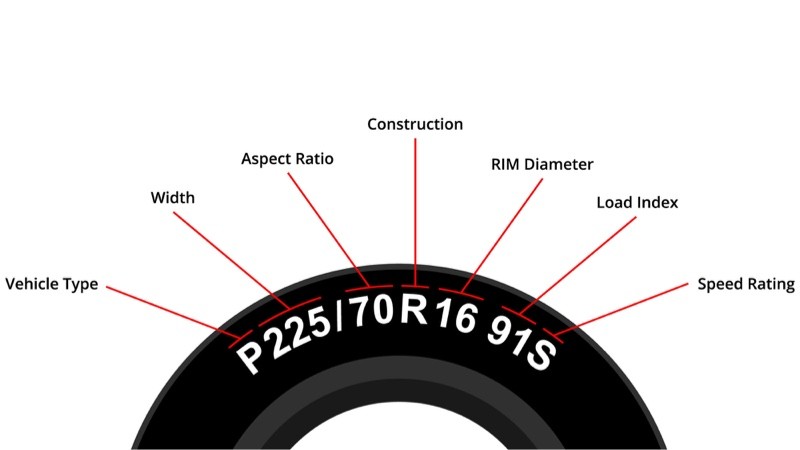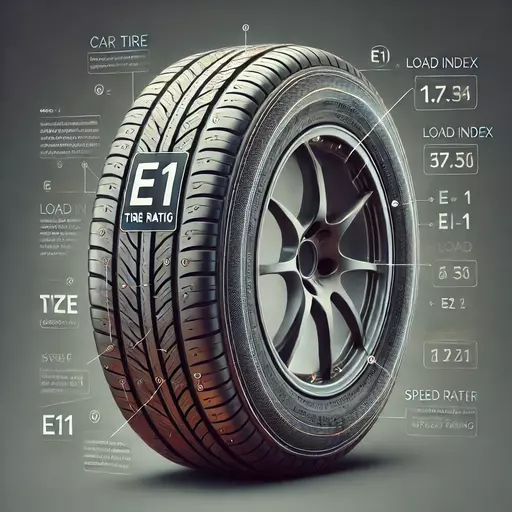
Of all the maintenance that needs to be done on a vehicle, car tire ratings are probably one of the most overlooked. Perhaps you are a seasoned car enthusiast or just a casual driver. It’s vital that you understand the numbers and letters on your sidewalls in order to keep your tires safe, perform well, and sustain long. The ratings within tires carry more than just a line of numbers or lettering; they hold great information about tire performance size and capabilities. Read here how we break down what every piece means, and why it matters, as we dig deep into the meaning of car tire ratings.
What are Car Tire Ratings?
Car tire ratings are usually a combination of letters and numbers found on the sidewall of every tire. It tells you the major features that have to be considered, which include size, construction, load, speed rating, and many more. In short, knowing car tire ratings will help choose the best tire for your car and bring out optimal performance in various driving conditions.
How Tire Ratings Are Broken Down
A typical car tire ratings will look something like this:

P215/65R15 95H
Sounds like a junk mixture of characters, but each part of this car tire ratings has its own meaning. Let’s break it down and understand what each part represents:
1. Tire Type (P)
The first letter of the car tire ratings indicates the type of tire. The most common letters that you will find are those listed below:
- P: Passenger car tire. These tires are designed for everyday vehicles, like sedans, SUVs, and light trucks.
LT: Light truck tire. These tires are designed to carry heavier loads and are mostly mounted on trucks and vans.
T: Temporary or spare tire, and usually shortened to a “donut” tire.
For example, in P215/65R15 95H, the “P” would indicate that this is a passenger tire.
2. Tire Width (215)
The second number shows the tire’s width, measured in millimeters from sidewall to sidewall. In our example, 215 indicates that this tire is 215 mm wide. This measurement determines how much area this tire will cover on the road and thus influences its handling and traction.
3. Aspect Ratio (65)
After the width is the aspect ratio, or how tall the sidewall of the tire is in terms of percentage of the width. In the example P215/65R15, the “65” means the sidewall height is 65% of the width of the tire. A high aspect ratio means a tall sidewall and will ride better but perhaps not so sharply. A low aspect ratio means the sidewall will be short and offer good cornering ability but a more jarring ride.
4. Building Type (R)
The letter following the aspect ratio will refer you to the type of construction of the tire. The most common construction is radial, by the letter R. Radial tires consist of layers of fabric that run radially from the center, thus making them durable and to have quite an efficient contact with the road. Another construction type that may appear is D, which refers to diagonal or bias ply construction, sometimes typical for older tires or used in certain heavy-duty vehicles.
5. Diametrical Dimension of Wheel (15)
This is the diameter of the wheel in inches, which the tyre is designed to fit into. In P215/65R15, the “15” refers to the tire fitting a 15-inch diameter wheel. It is an important consideration when buying a new tyre, as the diameter must be compatible with your vehicle’s wheel size.
6. Load Index (95)
Load Index is a number representing a numeric code associated with the absolute maximum weight any tire can carry. Each number is assigned to an individual weight capacity, as provided in the load index table. For example, the load index 95 is equivalent to 1,521 pounds or 690 kilograms per tire when inflated. Nevertheless, it would be more important to match the load index with what your vehicle weighs for the optimal performance of your tires.
7. Speed Rating (H)
The last letter of the tyre rating is the speed rating, which shows how high can a tyre be used while it is safe to use at its inflated capability. H indicated that the tyre can reach a maximum of 130 mph or 209 km/h. The ratings range from L, for a maximum speed of 75 mph or 120 km/h to Y at 186 mph or 300 km/h, with higher letters indicating higher maximum speeds.
Why Are Tire Ratings Important?
Having in mind what car tire ratings include, it is important to explain why they are significant. This is why it would be very useful to pay attention to such ratings for the following reasons:
1. Safety
The car tire ratings are safety-oriented. Poorly matched tires may give poor handling, reduced traction, and it may even lead to a failure of the tire. Hence, an unwarranted investment that sets in danger as due to the uneven carrying heavy loads or high-speed driving.
2. Performance
Tires affect your vehicle’s overall performance, including handling, braking, and cornering. A tire with the correct speed rating and load index ensures your vehicle’s optimum performance. For instance, some tires have been designed to resist high-speed performances for better stability at high speeds in highways.
3. Longevity and Efficiency
Appropriate tires with proper ratings for your car are extended in life and also enhance better fuel efficiency. Tires that are not appropriately rated may cause excessive wear whereby their replacement rate will be increased. Besides, correct load and speed rating can enhance fuel economy by reducing rolling resistance.
4. Comfort
The aspect ratio in car tire ratings also impacts ride comfort. Typically, the more significant the aspect ratio, the higher the cushioning, making for a softer ride, especially over rough or uneven surfaces. Those with a lower aspect ratio are usually sportier and much more sensitive to the driver but will probably yield a firmer ride that is less comfortable.
Common Misconceptions about Tire Ratings

It’s hard to understand the car tire ratings assigned to tires, and most drivers have been found to be committing one or more of the following mistakes.
1. Ignoring Load Capacity
Most drivers are concerned with the performance features of a tire, such as its speed rating, while ignoring its load capacity. It is important to choose one that matches the load requirements of your vehicle. Overloading your tire tends to make them fail mainly when heavily loaded or moving at high speeds.
2. Incorrect Speed Rating
Some drivers assume that all tires are built to handle high speeds but this is not the case. If you are driving regularly at high speeds, you need to choose tires that have suitable speed ratings. Tires with lower speed ratings may not give you the stability or handling that you need when driving at high speeds and therefore your safety will be compromised.
3. Wrong Size of Tire
Choosing the wrong tire size based on your car tire ratings would badly affect the car handling and safety. Therefore, always look in your vehicle’s manual for recommended tire sizes and cross-check the width, aspect ratio, and diameter compatibility with your car specifications.
How to Choose Right Tire for Your Car
Choosing the right tire goes beyond simply matching the numbers and letters on the sidewall. Here’s a quick guide to selecting the best tire for your vehicle:
1. Refer to Your Owner’s Manual
Your vehicle’s owner manual provides valuable information about the recommended tire sizes, load capacity, and speed ratings. Always start by consulting this document to ensure you’re choosing tires that meet the manufacturer’s specifications.
2. Consider Your Driving Needs
Think about the type of driving you do most often. If you live in a wet climate or an area receiving a lot of snowfall, you may require tires that can provide superior wet traction or those which offer a particular winter feature. If you drive for comfort, you can consider the highest aspect ratio tires. For performance driving, you want those low-profile tires with high speed ratings.
3. Check for Fit Compatibility
Ensure that the tire you settle for would fit your car’s wheel size and load requirement. Proper use of car tire ratings in terms of size, load, and speed will also ensure safety, performance, and longer life.
4. Compare Performance Features
Performance features about different tires vary. Some performance features include tread patterns, rubber compounds, and sidewall designs. Research and compare different tire models with aspects such as handling, ride comfort, noise on the road, and durability.
5. Budget Considerations
Tires come in a wide range of prices, and while premium tires may offer enhanced performance and longevity, there are also budget-friendly options that meet the required specifications for your vehicle. When purchasing tires, balance your budget with your driving needs to find the best option for you.
Conclusion
Understanding of car tire ratings will guide your choice of an appropriate tire for your vehicle and ensure your tire performs at optimal levels under varied driving conditions. Each unit of rating on the tire-from the width of the tire to the load index and speed rating-all plays a role in achieving safety, performance, and long life.
This makes you aware of all the ratings so that you could make the right decision in choosing the tires for your next ride, thereby contributing to a safer ride while being efficient. The next time you look at your car tire ratings, don’t just glance at the numbers, but take a moment to understand what they really mean for you and your vehicle.
Paying attention to these car tire ratings will maximize the safety, performance, and comfort of the road.